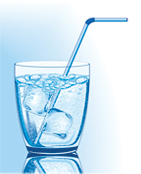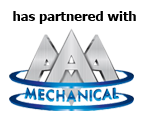Bad Water Taste
Using Filter Technology to Treat Bad Water Taste and Odor
 Bad water taste usually comes from the minerals naturally occurring in water and chemicals used to treat water. The taste will vary from place to place and your plumbing can also affect the taste of your water. Chlorine and fluoride are two common drinking water problems. Chlorine is intentionally added to water supply to kill germs in the water before it reaches homes, however, chlorine remains in the municipal water supply to homes which can leave water smelling and tasting bad. When chlorine reacts with water, it can generate other harmful byproducts like chloramines. Because chlorine has a very unpleasant smell, most people buy filters to remove the chemical. Fluoride is also intentionally added to water and is used to prevent tooth decay in children.
Bad water taste usually comes from the minerals naturally occurring in water and chemicals used to treat water. The taste will vary from place to place and your plumbing can also affect the taste of your water. Chlorine and fluoride are two common drinking water problems. Chlorine is intentionally added to water supply to kill germs in the water before it reaches homes, however, chlorine remains in the municipal water supply to homes which can leave water smelling and tasting bad. When chlorine reacts with water, it can generate other harmful byproducts like chloramines. Because chlorine has a very unpleasant smell, most people buy filters to remove the chemical. Fluoride is also intentionally added to water and is used to prevent tooth decay in children.
Taste problems in water come from total dissolved solids (TDS) and the presence of such metals as iron, copper, manganese, or zinc. Magnesium chloride and magnesium bicarbonate are significant in terms of taste. Fluoride may also cause a distinct bad water taste. Taste and odor problems of many different types can be encountered in drinking water. For example, bad tastes and odors can be caused by mineral contaminants in the water, such as the “salty” taste of water when chlorides are 500 mg/l or above. Decaying vegetation is probably the most common cause for taste and odor in surface water supplies. In treated water supplies chlorine can react with organics and cause taste and odor problems.
The Evolve Series EVBF backwashing filters treat many water quality issues, including: Neutralizing acid, and remove chlorine, iron, and turbidity or muddy water. Turbidity is sediment or foreign particles stirred up or suspended in the water. The result is a highly effective, computer-controlled filter with the power to consistently deliver quality water. Evolve Series filters have a large LCD screen, optional “Low/No Salt” Alarms, battery backup, high flow rates to sustain household water pressure even with multiple users, and only one moving part for simple servicing. Studies have shown that for health reasons it is best to reduce the chemicals in drinking and showering water. A whole house water filter can prevent chemicals from evaporating into the air in your house. According to EPA, “By filtering all the water that enters your home, you not only greatly enhance the quality of your household water, but you also dramatically improve your indoor air quality.”
Water-Right Impression Series filters are designed to treat these water problems, from both municipal water and well water. They use water efficiently and provide quality water without undesirable minerals, odors, tastes or acidity. Impression Series filters remove particles, eliminate taste problems, and treat acidic water that can corrode plumbing systems. Impression Series filters are programmable, have history and diagnostic screens, an extended lithium battery backup, and are simple to run and efficient to operate. Filters are available which neutralize acid, remove particles including microscopic minerals, eliminate taste and odor, and filters which remove hydrogen sulfide and iron, commonly associated with problem well water. An up-flow acid neutralizer removes sediment and oxidized iron particles by periodically backwashing the filters discharging sediment to the drain. There are also up flow and down flow filters.
With Up flow filters the water comes in to the filter through an upper basket and then down a riser tube in the middle of the filter tank. Once the water reaches the bottom of the riser tube it is then distributed through a lower basket attached to the riser tube. The water then flows from the bottom of the filter tank through the filter media in a swirling motion. The swirling motion is created by the reaction of the water coming out of the lower basket coming in contact with the bottom of the filter tank which is rounded or curved. An up flow design eliminates the need for backwashing on most filters because the filter media is continuously being fluffed every time the water flows through the filter tank. Another advantage to an up flow design is the amount of contact time the untreated water has with the filter media. An up flow design forces the filter media to swirl and allows the media to have longer contact time with the water.
With down flow filters the water comes into the tank through an upper basket and flows down the tank around the distributor tube through the filter media. The water flows through the media then into a lower basket at the bottom of the riser tube. The filtered water then flows up the riser tube and out of the filter. Down flow filters require back washing to raise or fluff the filter media. Down flow systems can sometimes have issues with channeling caused when the water makes channels or tunnels in the filter media. When the water does not reach the other filter media, the effectiveness of the filter can be weakened. If you are looking to purchase a down flow filter be sure that it back washes to avoid channeling. This is not an issue in up flow designed filters. Another benefit to up flow filters is that most do not require back washing, drain lines or electricity. Even though most filters may look the same, it is always a good idea to understand how the different filters work.
We offer the Water-Right Evolve Series Pro and Plus reverse osmosis drinking water systems which use a 5 stage process that filters ordinary drinking water down to the molecular level. The result is healthier, better tasting water for you and your family, all at a fraction of the cost of bottled water. The systems capture large suspended particles and remove unwanted chlorine. This system will also remove microbials such as cysta, giardia, cryptosporidium and e-coli. Click here for more information on our water treatment options. The Evolve Series Plus has a built-in booster pump that eliminates problematic low pressure feed rate problems.

